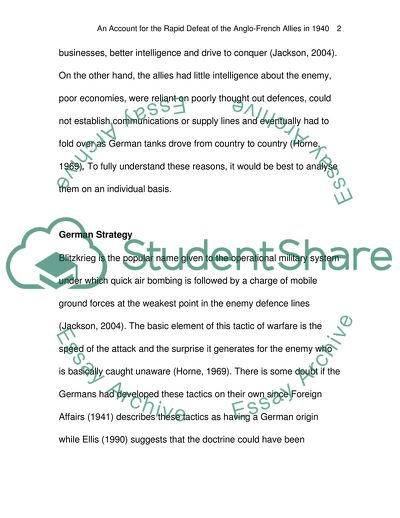Cite this document
(An Account for the Defeat of the Anglo-French Allies in 1940 Coursework, n.d.)
An Account for the Defeat of the Anglo-French Allies in 1940 Coursework. https://studentshare.org/history/1705990-how-do-you-account-for-the-rapid-defeat-of-the-anglo-french-allies-in-1940
An Account for the Defeat of the Anglo-French Allies in 1940 Coursework. https://studentshare.org/history/1705990-how-do-you-account-for-the-rapid-defeat-of-the-anglo-french-allies-in-1940
(An Account for the Defeat of the Anglo-French Allies in 1940 Coursework)
An Account for the Defeat of the Anglo-French Allies in 1940 Coursework. https://studentshare.org/history/1705990-how-do-you-account-for-the-rapid-defeat-of-the-anglo-french-allies-in-1940.
An Account for the Defeat of the Anglo-French Allies in 1940 Coursework. https://studentshare.org/history/1705990-how-do-you-account-for-the-rapid-defeat-of-the-anglo-french-allies-in-1940.
“An Account for the Defeat of the Anglo-French Allies in 1940 Coursework”. https://studentshare.org/history/1705990-how-do-you-account-for-the-rapid-defeat-of-the-anglo-french-allies-in-1940.


